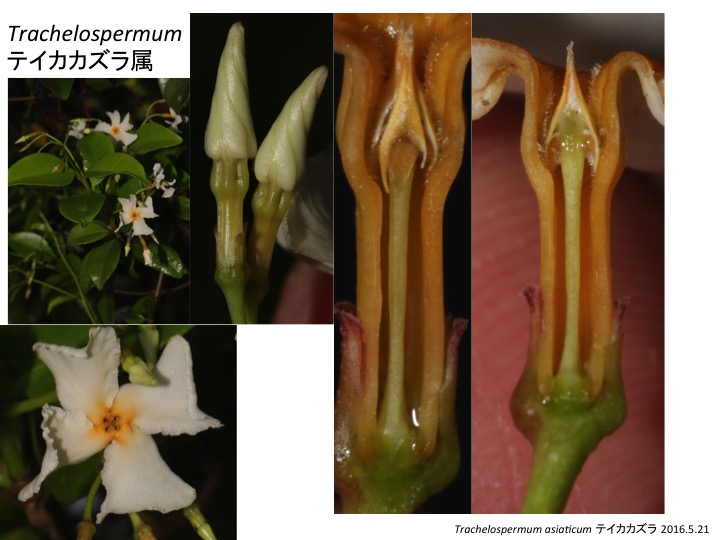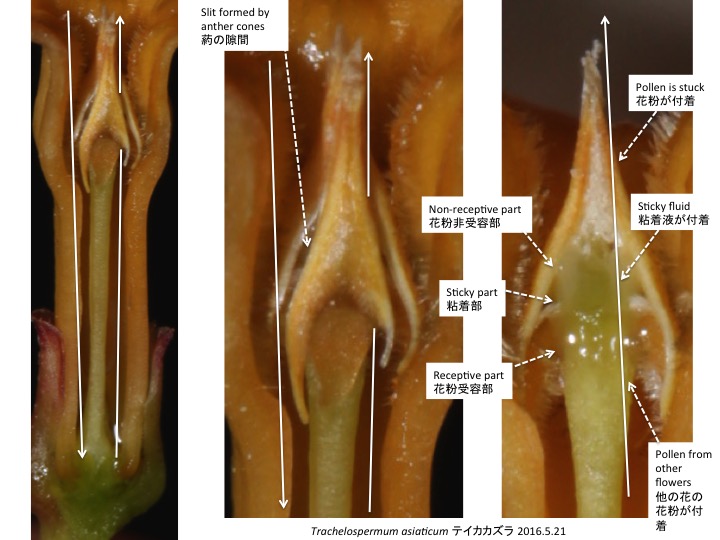回旋する花弁はアカネ科のサンタンカ亜科でも見られる。
雄蕊と雌蕊は癒合してキョウチクトウ亜科に特有の形態をしている。
Contorted corolla is also observed in Ixoroideae in the Rubiaceae.
Stamens and a gynoecium is connate and form a special morphology in Apocynoideae.
テイカカズラの受粉を観察した論文は見つからなかったので、同じ亜科のMandevilla tenuifoliaの研究(de Araujo et al. 2014)を参考に以下のように推定した。チョウなどの媒介昆虫の口吻は葯の間の隙間を通って花冠の奥の蜜にたどりつく。口吻を差し込むときは、媒介昆虫が花冠に乗っていないか乗ってすぐの状態なので、花冠と葯の隙間の間に隙間があり、口吻が柱頭に押しつけられることなく挿入される。しかし、口吻を抜くときには、昆虫の重みで花冠が傾き、口吻は葯の間の奥にある柱頭に押しつけられる。そうすると、口吻が抜かれるときに、まず花粉受容部で口吻に付いていた他の花の花粉がこしとられ、次に、粘着部で口吻に粘液が付き、そして、その粘液に二次提示された花粉が付き、別な花での受粉に使われる。
When proboscis is inserted, proboscis passes the slits formed between anther cones. At this moment, the pollinator insect is not landed or just landed on corolla and proboscis easily pass the slits without scraping pollen of other flowers on the proboscis. During the sacking of nectar, corolla is inclined and proboscis is pressed to the surface of gynoecium below the slit. When proboscis is retracted, other plant pollen stuck on the proboscis is scraped at the receptive part, then sticky fluid is stuck, and secondary presented pollen is trapped by the sticky fluid on the proboscis. This process is speculated by the study in Mandevilla (de Araujo et al. 2014).
de Araujo, L.D.A., Quirino, Z.G.M., and Machado, I.C. (2014). High specialisation in the pollination system of Mandevilla tenuifolia (JC Mikan) Woodson (Apocynaceae) drives the effectiveness of butterflies as pollinators. Plant Biol (Stuttg) 16, 947-955.


